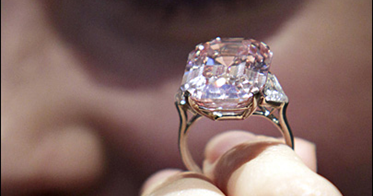
Every human likes to wear different ornaments according to their wish
An accessory is a type of adornment worn suspended around the neck. It is most ordinarily made in adaptable structures, for example, a chain, as a series of dots, pearls, gemstones, or other characteristic materials, or made of a more unyielding band of metal adorned with gemstones, pearls, dabs, or different strategies these are the Heart of the Ocean Necklace , for example, etching, filigree, repoussé, granulation, for instance. Lengths of neckbands change, and explicit sorts identified with limits long reach from a short choker or canine restraint jewelry that fits directly around the fundamental segment of the neck to a more extended neck chain or series of dots called a sautoir, now and then worn hanging out to or past the midsection. Likewise, with different bits of gems, the jewelry has been a significant site of adornment for the body yet additionally of correspondence for the individual. As esteemed material culture, pieces of jewelry impart riches, influence, alliance, eminence, levels of assets and aptitude, and components of character and position.
Some ornaments have critical structure and material

The toughness of gems like accessories made of metal, glass dots, or gemstones gives an occasion to acknowledge and comprehend the innovation, social practices, aesthetics, and style of different societies and inaccessible time-frames. A straightforward neckband produced using a line of neighborhood natural materials, for example, shells, teeth, or bone dabs is one of the types of gems embraced by early societies around the globe. All the more valuable materials from farther away were additionally esteemed for early pieces of jewelry, now and again as dots, for example, those of Mediterranean red coral found in Neolithic internment in the Alps (around 4200-3400 B.C.E.). Other early sorts of jewelry incorporated the torc or force, an antiquated Celtic neckpiece made of curved metal, and the lunula, a level, sickle formed, and engraved variety of the torc found in Bronze Age Ireland and Scotland (around 1800-1500 B.C.E.).
Neckbands were made to show fitting enriching and expressive highlights through every period and from locale to district. Every period likewise has some impact upon those after, and restorations of styles, for example, traditional Greek and Roman accessories or Egyptian beadwork collars, are common. During the Middle Ages, gems turned into a more vital component of dress, and neckbands supplanted pins as the essential type of gems in the late Gothic and early Renaissance time frames. Pieces of jewelry set with gemstones and substantial gold chain accessories with pendants were in style as a qualification of abundance and economic well-being from the fourteenth and fifteenth hundreds of years through the sixteenth and mid-seventeenth hundreds of years.
The necklace is worn on the neck
Patterns for wearing neckbands have generally followed the style of neck areas in European and American in vogue dress. As such, as neck areas were brought down, additional, just as more intricate, accessories were seen. In any case, this doesn’t imply that neckbands were not worn when neck areas were high. For instance, a Carcanet is a kind of wide, bejeweled, or plated gold connection neckband that looks like a collar. It was worn by men as a superficial point of interest in the fifteenth through seventeenth hundreds of years, enclosing the base of the neck over a man’s doublet and under the intricate trim ruff, or worn with gold chains folded over the neck, or looming over the shoulders down the front of bodices and doublets.
